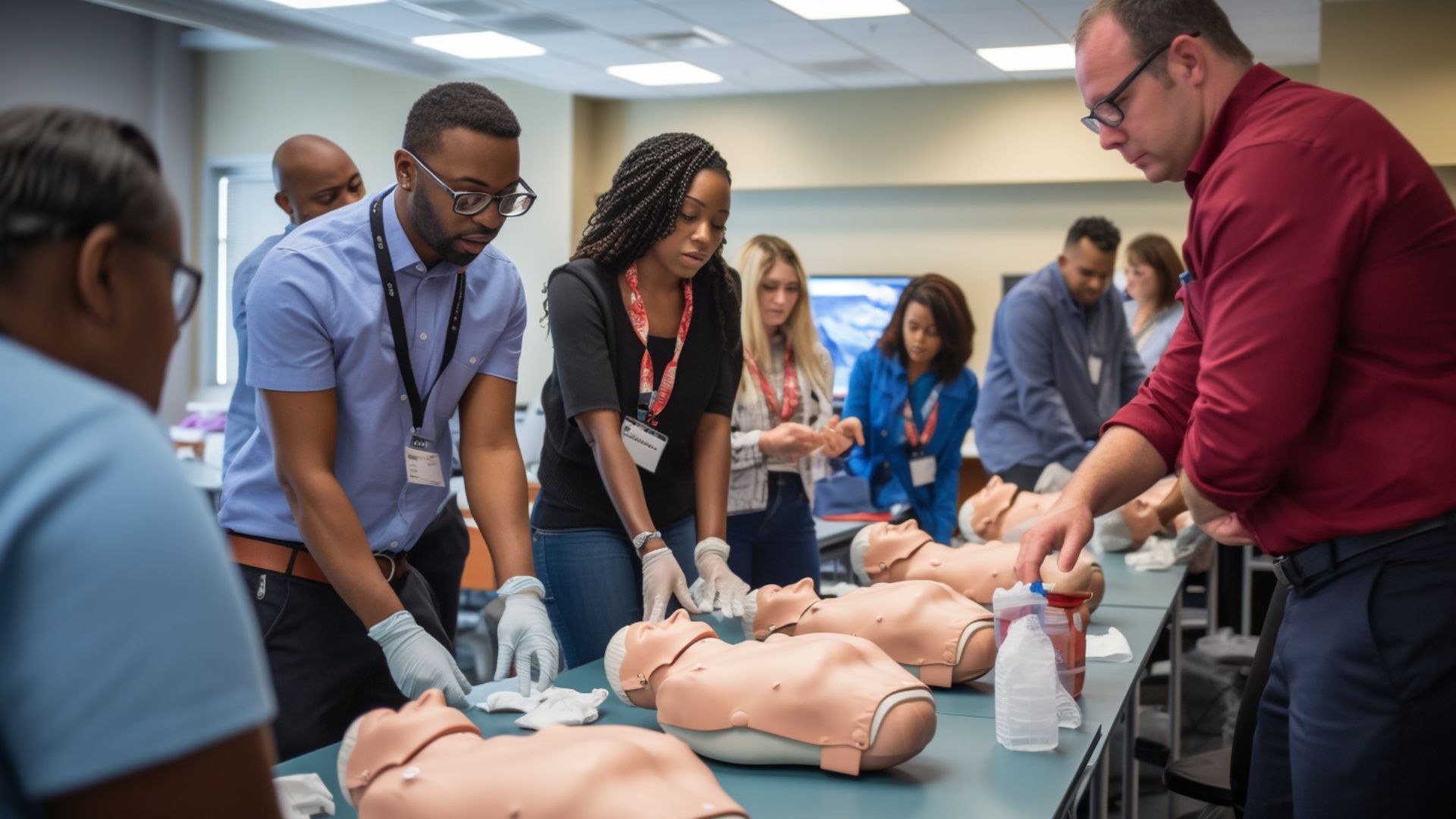
Cardiopulmonary resuscitation (CPR) and Automated External Defibrillator (AED) are integral components of emergency response that can significantly increase the survival rate of cardiac arrest victims. The importance of these lifesaving skills is undeniable. Incorporating CPR and AED training into workplace safety measures creates a culture of safety that benefits your entire company.
The Need for CPR and AED Training in the Workplace
Sudden cardiac arrest remains one of the leading causes of death globally. According to American Heart Association, there are over 10,000 cardiac arrests annually in the workplace. With the high possibility of these incidents occurring at the workplace, the ability to perform CPR and use an AED can make a significant difference between life and death. With the appropriate training, employees can quickly respond to these medical emergencies, potentially saving a colleague’s life before medical professionals arrive.
Benefits of Incorporating CPR and AED Training
Incorporating CPR and AED training into your workplace safety measures comes with a plethora of benefits:
- Increased Safety and Preparedness: Employees who are trained in CPR and AED use are better prepared to handle cardiac emergencies.
- Employee Confidence: With proper training, employees will feel confident and calm during emergencies, making them more effective responders.
- Reduction in Response Time: Training ensures immediate response to cardiac emergencies, increasing the survival chances.
- Legal and Insurance Benefits: Some areas have laws requiring CPR and AED training in workplaces. Furthermore, having trained personnel might reduce insurance costs.
Steps to Incorporating CPR and AED Training
Implementing CPR and AED training into your workplace safety measures can be achieved through a few key steps:
- Identify a Certified Training Program: Find a program that offers certified CPR and AED training, such as the CPR Training at CPR Certification St. Petersburg.
- Allocate Time and Resources for Training: Ensure your team has adequate time for training and the resources they need to learn effectively.
- Organize Regular Refresher Courses: Skills fade with time. Regular refreshers help maintain employee readiness.
Role of AEDs in the Workplace
Having an Automated External Defibrillator (AED) readily available in the workplace is paramount for staff and guest safety, just like having trained employees. These portable devices play a vital role in restoring a regular heartbeat during a cardiac arrest.
Benefits of Having an AED in the Workplace: When used in conjunction with CPR, an AED can significantly improve survival rates during cardiac emergencies.
Selecting and Maintaining an AED: Opt for a user-friendly device that is easy to operate and maintain. Regular checks and maintenance ensure its readiness for use in critical situations.
Providing AED Training: To maximize the effectiveness of AEDs, it is essential to incorporate comprehensive AED training into your safety training plan. This empowers employees to confidently and effectively utilize this life-saving equipment.
By integrating AEDs into your workplace and providing appropriate training, you enhance the overall emergency response capabilities of your organization, creating a safer environment for all.
Promoting a Culture of Safety
Incorporating CPR and AED training is one part of promoting a culture of safety in the workplace. To promote your culture of safety:
- Provide Continuous Learning and Improvement: Promote an environment that values learning and regular improvement in safety measures.
- Encourage Employees to Get Certified: Regularly encourage and incentivize employees to get certified and attend refresher courses.
- Provide Drills and Real-life Scenario Training: Regularly conduct drills to practice these skills in a real-life scenario.
Sign Up for Group CPR Classes Today!
The importance of incorporating CPR and AED training into workplace safety measures cannot be overstated. Not only can it provide life-saving skills to employees, but it also promotes a culture of preparedness, safety, and care for each other’s wellbeing. For quality and certified training, consider booking a course with St. Pete CPR. Let’s together make our workplaces safer!
Frequently Asked Questions
What is the minimum number of staff that should be trained in CPR and AED use?
Ideally, all staff should be trained. However, at least one trained person should be available at all times.
How often should CPR and AED training be refreshed?
According to the American Heart Association (AHA), refreshers should be done every two years.
Are there legal requirements for having AEDs in the workplace?
This varies by location. Some states do require AEDs in certain businesses.
What steps can a company take to encourage more employees to participate in CPR and AED training?
Companies can provide on-site training, incentivize certification, and regularly communicate the importance of these skills.
How to respond to an employee who’s uncomfortable with performing CPR?
Reinforce the importance of these skills, provide extra training, and ensure they are comfortable with their knowledge and abilities.
What are some of the barriers to implementing CPR and AED training, and how can they be overcome?
Time and cost are common barriers.